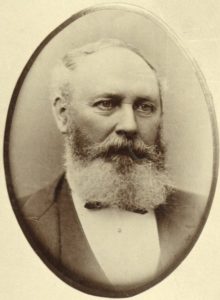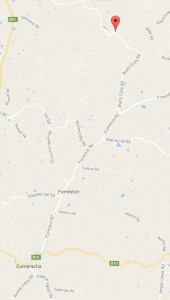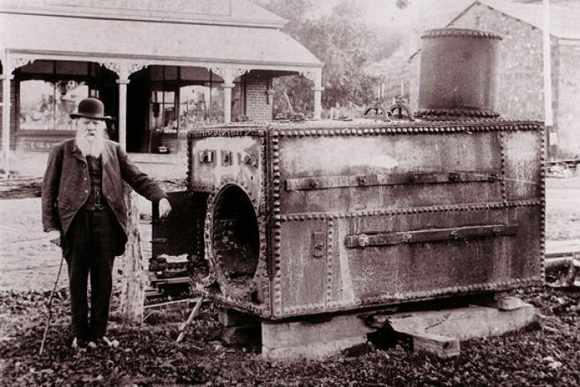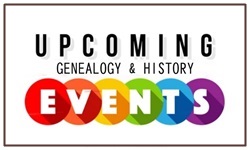Australia Day Blog Challenge: Climbing Your Family’s Gum Tree
I do love a good geneameme, so when Shauna Hicks posted her Australia Day post recently, which ended up being a revisit of an Australia Day Blog Challenge that was created by fellow Aussie geneablogger, Pauleen Cass a number of years ago, which apparently I missed … the challenge was on!!
Pauleen says …
“The geneameme is to test whether your family is ridgey-didge and to show us how Australia runs in your veins, without any flag-waving and tattoo-wearing. Shout it out, be proud and make everyone wish they lived in this wide brown land of ours.”
1. My first ancestor to arrive in Australia was …
Ok, if we count “what’s yours is mine” when you get married – Mr Lonetester’s convict, John Warby, who was given a free ticket to Australia in 1792, is my earliest ancestor. You can read more about him here. However ‘my’ own first ancestor would be Isaac and Simeon Richardson. They are two brothers who were labourers from Kent, and were sentenced to death for their part in local riots, however thanks to the local townsfolk, their life was spared, and instead they were transported to Van Diemen’s Land (for more click here). But my first non-convict ancestor was my Randell family from Devon to South Australia in 1837 (click for more details). Based on my Randell family, i’m 6th generation Australian.
2. I have Australian Royalty (tell us who, how many and which Fleet they arrived with) …
OK, I don’t have any first, second or even third fleet convicts, but I do have Australian Royalty.
Isaac RICHARDSON, transported 1831, Lord Lyndoch
Simeon RICHARDSON, transported 1831, Lord Lyndoch
William COSGROVE (still not 100% proven, but seems highly likely)
So that was my direct lot now on to Mr Lonetester’s gang of Australian Royalty …
John WARBY, transported 1792, Pitt
Sarah BENTLEY, transported 1795-06, Indispensible
Isaac DOWSE, transported 1802-03, Glatton
Esther Jane JENNER, transported 1807, Sydney Cove
Alexander MACDONALD, transported 1812-13, Fortune
Elizabeth SYMONS, transported 1814, Broxbornebury
James LAYTON, transported 1814-15, Marquis of Wellington
Charles BILLING, transported 1835, Norfolk
Frederick POINTON, transported 1836-37, Sarah
Henry POINTON, transported 1836-37, Sarah
Charles KERSLAKE, transported 1837, Moffatt
Sarah Jane BROWN, transported 1838-39, Majestic
Thomas POINTON, transported 1840, Lady Raffles
Isobel CUTHBERT, transported 1844, Margaret
Louisa WRIGHT, transported 1844-45, Garland Grove
James DODD, transported 1852-53, Oriental Queen
For more on all of these, head on over to this post.
3. I’m an Aussie mongrel, my ancestors came to Oz from…
Mostly England and Ireland, but there is also some German, Dutch and Finnish mixed in there.
4. Did any of your ancestors arrive under their own financial steam?
Pretty sure most of them made their own way here. Though see Q2 for the convicts who got a free ticket here, but then there’s also my great grandpa who was a seaman and jumped ship in Queensland!
5. How many ancestors came as singles?
You know , I’ve never actually counted! I will do that someday .. just not today
6. How many came as couples?
As above … I haven’t counted.
7. How many came as family groups?
I definitely know that some came out as families – such as my Hannaford’s and Randell’s from Devon, and the Phillips family from Cornwall. But people think travelling for a day or so on a plane with kids now is hard! Try 3 months in a ship!! I can’t even begin to imagine.
8. Did one person lead the way and others follow?
Hmmm … I know that happened with a family that went from Cornwall, England to the US. The dad went first, and was followed by his wife and kids later. But no-one comes to mind that came to Australia.
9. What’s the longest journey they took to get here?
For this one I need to go to Mr Lonetester’s family history again, as he has one that takes the cake! His William Kennard Elphick and his wife Susanna Elphick (nee Elliot), sailed on the ‘Plantar’ ship from London to South Australia in 171 days (25 November 1838 – 15 May 1839). Yes, that’s nearly SIX MONTHS!! Why did it take so long? Well thanks to a diary that a fellow passenger kept, and it’s been preserved … but with a mutiny, a lost crew, captain missing a key port and then almost running out of food, almost running aground … and so it goes on. Anything that could happen on a voyage, DID happen on this one. For more about it you can read my original post here. And the State Library of South Australia have digitised the original, and made it available online, which is viewable here.
10. Did anyone make a two-step emigration via another place?
Not that I know of.
11. Which state(s)/colony did your ancestors arrive?
Mine were pretty much all South Australian immigrants, apart from the convict brothers who went (and by went, I mean sent) to Tasmania.
12. Did they settle and remain in one state/colony?
Most of my reli’s came to South Australia, and certainly the greater portion of them stayed. A few of the wider then went off to different states, but my direct reli’s stayed!
13. Did they stay in one town or move around?
If we’re talking about my direct family – they settled in the Adelaide Hills, stayed there, and family (including myself) still live in the vicinity.
14. Do you have any First Australians in your tree?
Not that I’ve found so far.
15. Were any self-employed?
I think most of them were self-employed actually.
16. What occupations or industries did your earliest ancestors work in?
Farmers, Orchardists, Flour-millers, River-boat builders and captains, Fruit market sellers. That’s the ones that comes to mind at present …
17. Does anyone in the family still follow that occupation?
I have a cousin who is a 5th generation apple orcharder in the Adelaide Hills! So that’s seriously awesome.
18. Did any of your ancestors leave Australia and go “home”?
Not that I’ve found so far!
There were a few more questions in Pauleen’s original post, but that was about current stuff, not my ancestors, so I opted to leave those out for now. So that’s a little about some of my Australian ancestors …
Clearly there are some bits I need to do more research on – so I’ll add that to the to-do list, and I’ll get to it one day.
The Train, the Explosion, and the Parliamentarian
The year was 1890, and …
“a most painful accident, of a character unparalleled in the annals of railway accidents in this colony, if not in Australasia, occurred on the Northern line on Friday evening, Jan. 17. The terrible calamity which befel … was so sudden, and its effects so appalling, that the harrowing details were listened to with bated breath and unconcealed sorrow.”
That’s how the long article about the tragic death of well-known South Australian businessman and parliamentarian, Honorable James Garden Ramsay, M.L.C. begins.
James Ramsay was born in Edinburgh, Scotland in 1827, did an apprenticeship as an engineer at the St Rollox Ironworks in Glasgow, and then emigrated to South Australia in 1852. He established an agricultural implement and machine manufacturing plant at Mount Barker, which represented the starting point of what later grew into the largest business of its kind in the colony. Apart from his Mount Barker business, he opened up agricultural implement manufacturing businesses in Adelaide, Clare and Laura as there was a huge demand.
Anyway J.G. Ramsay’s interest in politics began in the 1860s, and in 1870 he entered Parliament for Mount Barker, and from then until his death he held various parliamentary positions. The article says …“Altogether he served over five years as a Minister of the Crown. As leader of the Legislative Council he exhibited considerable tact and ability, and possessing the confidence of his fellow members, he was eminently successful in conducting the business”.
Which then brings us back to Friday evening, 17 January 1890 when James Ramsay is travelling back to Adelaide, from Saddleworth, South Australia by train. Travelling with Mr Rounsvell (a fellow M.P.), who by the time the train reached Riverton left to go to the smoking carriage, after which Mr Ramsay fell asleep while reading the newspaper. The following is the report of what happened …
“The Hon. gentleman was left by himself, and he laid down on the seat, and after reading a newspaper fell asleep. Just before the train reached Stockport he was awakened by a loud report, which proved to be the bursting of the lamp, and in an instant he was all ablaze, the burning oil falling all over him. He tried to open the door of the carriage, but was unsuccessful, and it was not until the train arrived at Stockport that he was enabled to roll on to the ground in a terrible condition. Assistance was at once procured, and he was wrapped in a rug and some bags, the flames in this way being extinguished. It was then seen that Mr. Ramsay was in a very serious condition, and that he was suffering the most acute pain. Telegrams were dispatched to Gawler and Adelaide, and at the former place the sufferer was met by Dr. Popham, who advised his being conveyed on to Adelaide.”
Badly burnt, Mr Ramsay was met at the Adelaide train station by Dr Marten, his brother John Ramsay and a waiting ambulance.
“Dr Marten found him very much collapsed, suffering greatly from the shock. He was lying on the floor of the carriage, partially covered with rags, most of his clothes being burnt off. He was at once removed int he ambulance van the Patients’ Home on South-terrace, where his wounds were dressed by Dr. Marten. He still retained consciousness, notwithstanding the effects of the shock. The extent of the injuries were then ascertained, and the sufferings of the unfortunate gentleman must have been intense. He was burnt from head to foot, the skin being taken off from all parts with the exception of the head. His beard was completely destroyed, and his eyebrows and eyelashes singed. Te skin came off the left hand like a glove, the left having suffered more than the right, the burns extending up to the armpit. The injuries were greatest about the abdomen and the arms, though the whole body was badly burnt.”
His wife who was at Mount Barker at the time, was advised of the accident on Friday evening, and made her way to the city, reaching Adelaide by 5am on Saturday morning. However, sadly due to the severity of the burns, James Garden Ramsay passed away on Saturday 18 January 1890, at about 10.30am.
He was a migrant who certainly left his mark in South Australia in business, politics and the local community where he lived. This shows simply by the number of articles written in newspapers all around Australia about his death (over 8500. Yes, seriously!!).
Thanks to Trove, you can read the FULL article about the accident from the report in the Adelaide Observer, Saturday 25 January 1890, click here, and for further information, click on the links below.
More information:
James Garden Ramsay on Wikipedia
Read the Adelaide Observer article in full here
You can find details of the inquest here
His obituary is printed in the South Australian Register here
And for odles more articles on his death click here
Trove Tuesday: “There’s Gold in Them Hills …”
The tiny town of Gumeracha in the Adelaide Hills is well known these days for being the home of the world’s biggest rocking horse, the annual medieval fair, and of course wines. But believe it not, at one stage, Gumeracha was well known for its goldfields.
Many who have connections to the area would have heard of Watts Gully Road at Forreston (previously North Gumeracha), this was one area where gold was, and was first found by James Watts back in 1884. Dead Horse Gully is near Watts Gully Road, and this was another of Gumeracha’s gold diggings areas.
For my Trove Tuesday post, I’ve found the following article which discusses the Dead Horse Gully goldfields … and for someone who didn’t know about them (yes me), I found it fasinating, so thought I’d share it with you. Note: old references to this place list is as Deadhorse Gully (two words), or even Dead-Horse Gully (with a hyphen), current day spelling is Dead Horse Gully (three words). For consistency, I’m using the three word version.
From the South Australian Register, dated Saturday 14 March 1885 …
THE GOLD FIND AT GUMERACHA.
During the last few days large number of men have arrived at Dead-Horse Gully on the gold rush. Now nearly 100 men are working in the gully around Mount Crawford. The rush was so great that on Thurs-day Hill & Co. put on a special coach from Adelaide. The rush is at Mount Crawford, about seven miles north-east of Gumeracha. To get at the field it is necessary to turn off the main road at North Gumeracha-road and to go right through that township. For the first three miles there is a good district road, but after that there is merely a vehicle track through the scrub and rough hilly ground. Deadhorse Gully is about a mile and a half long, and is thickly wooded with colonial honeysuckle. On entering the gully several holes where trials have been made are noticeable. These are in some cases three or four feet deep; in other cases even more. Right along the gully a large number of claims, about fifty, are being worked. These are of various depths. One or two men have gone to a depth of 18 feet before bottoming. The soil is gravelly and patched with black sand in nearly all the claims. In this soil gold is found in a great many cases.The gully runs due east and west, and the whole length has been pegged out. In some cases the men say that they have got payable gold, while others have got simply the colour. One man, who has been working in the gully for three years with his mate, kept the matter quiet, but every fortnight he used to take £8 or £9 worth of gold into Gumeracha. He has been very successful, and has a nugget in his possession weighing 3 oz. Other men have done very well. One showed several nice nuggets weighing under an ounce. He had got all the gold from coarse rough surface. The average depth of the claims before striking the drift is about ten feet. Of course, gold is got at a less depth than that in some places. One man only went four feet before he came on stuff which, when panned, yielded several specks. Some men who have been up several days have been unsuccessful and have cleared out, but their places were quickly filled. Several men are on the road tramping it to the gully. It is considered that there is gold in the drift from the reef on the hill on the north side of the gully. Experienced miners on the ground agree that all the gullies in the vicinity contain gold, and that several abound with gold to quite as great an extent as this. Two or three men have marked out claims in other gullies.
Cabs, carts, drays, wagons, and vehicles of all descriptions are on the ground. There are a number of tents for the men to sleep in, but others are content to lie under trees or to sleep in carts. There are men of all occupations amongst those present — old miners, clerks, cabmen, labourers, several boys, and sailors.
At the East-End Gully there is an indication of a good reef. Some quartz picked, up on the surface showed copper, gold, and pyrites. The great difficulty to contend with in working claims is water. When the men get down ten feet or so water from the hills soaks through this, and has caused the abandonment of one or two claims. Provisions for the camp are brought round by the storekeepers of Gumeracha, but a store in a galvanized-iron structure of about twelve feet by nine is to be opened on Saturday.
On Thursday the Warden of the Goldfields visited the ground, and considers that there is good gold in the gully, but not enough of the mineral for the hundred men who are now on the spot. The whole bottom of the valley has been pegged out. Mr. Hack says that the gullies on either side of this one have gold, and advises the men to spread out. If they do this there is very little doubt but that the industry will get a good start, as the surface is good – so good that he believes that the reefs, of which there are several in the hills around and about, must be very rich.
The samples of ore found are of what is known as burnt ore. It would be very foolish for any more men to go on at present to the gully, as all the likely ground is holed, but the other gullies, to which provisions could be taken daily, offer a good field for prospecting.
Owing to the crude character of the utensils some gold has probably been lost. If the reef is fallen in with at these claims the men will be unable to crush the stone, but none appear anxious to do other than sink surface claims. During the day a large number of visitors go over the ground. The best find so far was a nugget weighing 3 oz.
Fascinating isn’t it, though I still find it hard to envisage just what it was like back then. You can find the whole original article on Trove here.
So there’s just one more little piece of a small town’s amazing history for you.
For those who are not familiar with the term Trove Tuesday, it is a popular theme within the Australian genealogy blogging community, as we browse the Trove website (Australia’s old newspapers that are online AND FREE), find an article that interests us, and write about it … usually on a Tuesday. You can find all of my past Trove Tuesday posts here.
Genealogy Close Calls
I was inspired to write this post as a result of reading Heather Rojo’s blog, Nutfield Genealogy, when wrote about her “Top Ten Genealogy Close Calls“.
The title alone intrigued me, as I wasn’t quite sure what she meant by ‘genealogy close call’. But she explains it well:
“What’s a “Genealogy Close Call”? It happens when I research an ancestor and realize that if fate didn’t intervene I wouldn’t be here today. Some of our ancestors narrowly escaped disasters, only to live on and produce a descendant that led to YOU. “
So that got me thinking. Did I have any “genealogy close calls”. My initial thoughts were no, but as the day progressed I remembered the following incidents:
MY GENEALOGY CLOSE CALLS
WILLIAM KENNARD ELPHICK (c1815-1869) – Survived the voyage
and wife SUSANNA ELPHICK (nee ELLIOT) (c1812-1899)
William and his wife Susanna married in London in November 1838, and then immediately boarded the ‘Plantar’ ship to start a new life in Australia. The journey which on average takes about four months, took almost six months partly due to the captain’s incompetence – missing a port where they were meant to collect supplies, and having to stop elsewhere as a result, together with other misadventures such which included much of the crew being lost, as were some passengers and most of the livestock. Eventually a new crew was acquired and the journey continued. For more on their story click here. The Elphick family settled in Adelaide, and had numerous children. The Elphick’s are Mr Lonetester’s 3x great grandparents. While not everyone survived this journey, they did, and if they hadn’t he wouldn’t have be here.
OTTO RAFAEL WINTER (1880-1961) – WW1 injuries
Otto Winter was born in Finland and spent 7 years sailing the world on a merchant sailing ship. I’m sure if I had detailed of every voyage there would be ‘close call’ stories there, but I don’t, so I won’t make assumptions. After having jumped ship in Australia, he chose to get naturalised and in 1916 he signed up for the Australian Army in WW1 and was sent off to Belgium. During his three years in the AIF he was wounded several times, including being shot in the stomach and poisoned with mustard gas while tunnelling at Ypres. Despite this, he survived and made it home to his young wife and baby boy. Had he not survived my grandma would not have been born. For more on Otto Winter click here.
————————
GENEALOGY CLOSE CALLS, BUT NOT CLOSE ENOUGH
ISAAC RICHARDSON (1804-1873) – sentenced to death
A labourer in Kent, Isaac Richardson together with his bother Simeon, were rioting to stand up for their rights during the Industrial Revolution. Sentenced to death, the local townspeople petitioned to save their life and both were then sentenced to transported to Van Diemen’s Land for life instead. Isaac’s wife Matilda (nee Bonner) and the two children Edward and Esther were given assisted passage in 1837-38. Isaac was granted a conditional pardon in 1842. Isaac and Matilda had a total of 9 children, and continued to live in Tasmania. Isaac’s first born child, Edward was my 3x great grandpa). As Edward was already born before Isaac was transported, this doesn’t count as a ‘close call’ for me, but for descendants of the 7 children that were born later it certainly would. You can read more about Issac Richardson here.
WILLIAM RICHARD RANDELL (1824-1911) – near explosion
William Richard Randell is known as the father of paddlesteamers on the River Murray. He emigrated with his parents from Devon, England in 1837 and initially they bred cattle and drove them along the land along the Murray River, in South Australia and later setup flour mills in the Adelaide Hills. Despite having no previous experience in navigation or having ever seen a steamboat, W.R. Randell became obsessed with building a paddlesteamer to transport supplies up and down the river. And by 1853 the “Mary Ann” which he built became the first paddlesteamer in South Australia. The boiler, a box shape, and made of lead riveted together was said to have “needed chains wrapped around the middle. Even then when proceeding at maximum speed the sides and top were observed to swell in and out like a concertina”. And while it didn’t explode, but it seems like it wasn’t far from it. William Richard Randell is a half-brother to my 2x great grandpa … so he’s not a direct relative. But had he not survived his paddlesteaming days, it certainly would affected his direct line.
GEORGE PHILLIPS (1865-1941) – nearly drowned
There’s a story that’s been handed down the generations in my family about George Phillips. George Phillips and his wife Mary Ann (nee Kemp), along with their baby boy, also George, emigrated from England to South Australia in 1865 onboard the “Adamant”. The story goes that a fellow female passenger was holding baby George, when Mary Ann had a bad feeling or premonition, so she collected him from the lady, and shortly afterwards that poor lady fell overboard. I don’t know the validity of the story, except that there was a lady who drowned on the voyage out mentioned in the surgeon’s journals. So it is a possibility. And as baby George survived, he counts as a genealogy close call, although not for me, as he’s a brother to my great great grandpa, not my direct line.
————————
While I don’t have many ‘close calls’ in this list. Ok technically only two, this just means that I have more research to do. More digging to find the stories.
Just think of all the possibilities there are, past and present: car accidents, horse and cart accidents, farm accidents, mining accidents, fires in the house, other occupational accidents, childbirth, fell down steps, numerous diseases and ailments, natural disasters (fires, floods, famine, tornado, cyclone, hurricane), major sporting injuries, a close encounter with a wild animal, or was your ancestor known for getting in fights? The list is endless …
Now I’m off to see what else I can find …







